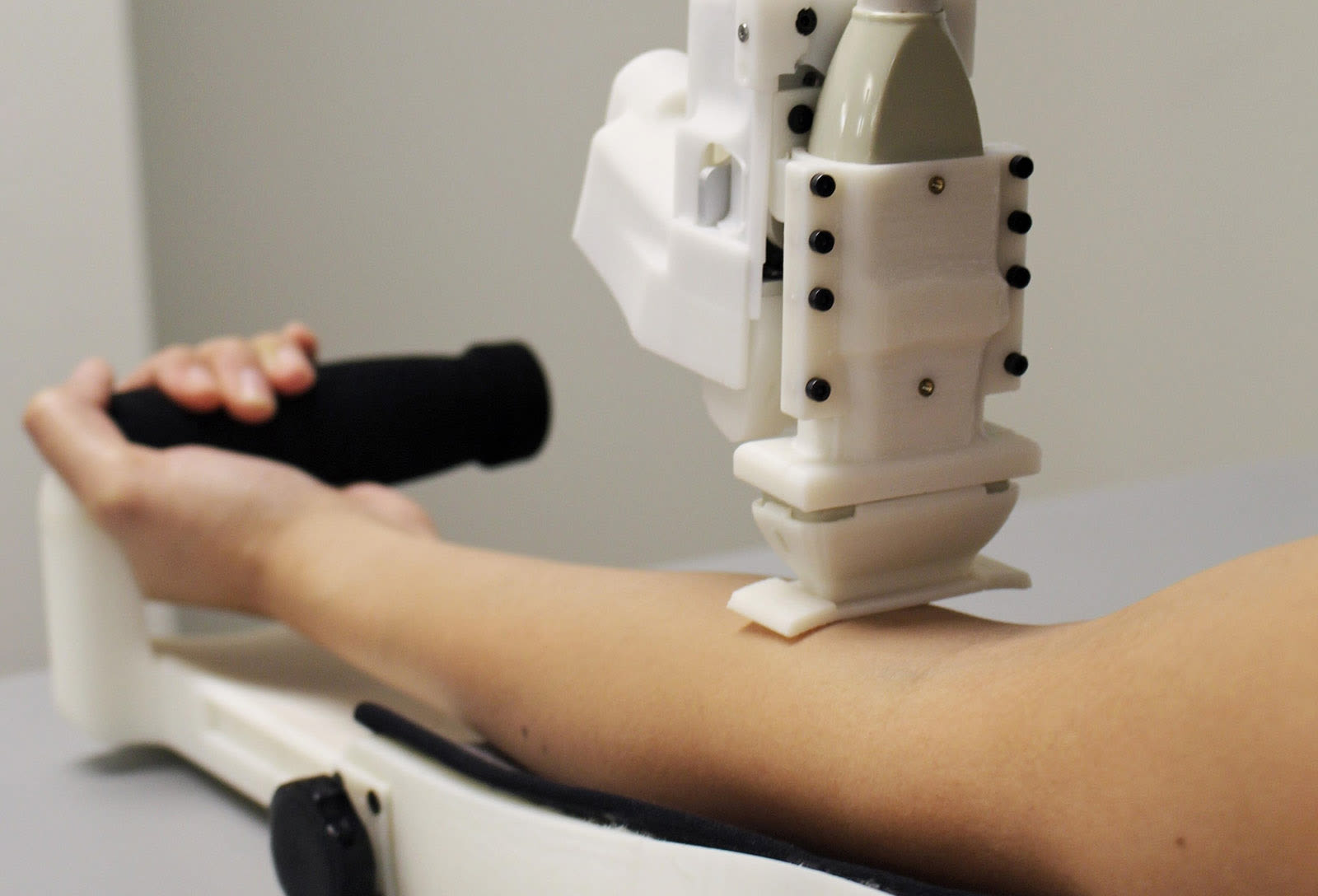
Printing a chocolate heart is easy enough, but how about an actual organ? There are folks working on it, but it turns out those veins of yours aren't exactly a breeze to replicate. Researchers at the University of Pennsylvania and MIT may have found a semi-sweet solution -- dissolving a sugar lattice in a batch of living Jell-O. The research team uses a RepRap 3D printer and a custom extruder head to print a filament network composed of sucrose, glucose and dextran which is later encased in a bio-gel containing living cells. Once the confectionery paths are dissolved, they leave a network of artery-like channels in their void. Tissue living in the gel can then receive oxygen and nutrients through the hollow pipes.
The research has been promising so far, and has increased the number of functional liver cells the team has been able to maintain in artificial tissues. These results suggest the technique could have future research possibilities in developing lab-grown organs. MIT Professor Sangeeta Bhatia, who helped conduct the effort, hopes to push the group's work further. "More work will be needed to learn how to directly connect these types of vascular networks to natural blood vessels while at the same time investigating fundamental interactions between the liver cells and the patterned vasculature. It's an exciting future ahead." Scientists at other labs could also get their mitts on the sweet templates since they're stable enough to endure shipping. Head past the break for a video of the innard infrastructure.
Continue reading Researchers use 3D printer, sugar, to create a fake artery network for lab-grown tissue
Researchers use 3D printer, sugar, to create a fake artery network for lab-grown tissue originally appeared on Engadget on Tue, 03 Jul 2012 04:07:00 EDT. Please see our terms for use of feeds.
Permalink  Hack a Day
Hack a Day |
 Nature, University of Pennsylvania
Nature, University of Pennsylvania |
Email this |
Comments
 The only thing worse than getting a needle is getting two (or more) when the first jab attempt fails. Now, researchers from Rutgers and Mount Sinai Hospital have developed a robot that can see under your skin and supposedly do the job better than hum...
The only thing worse than getting a needle is getting two (or more) when the first jab attempt fails. Now, researchers from Rutgers and Mount Sinai Hospital have developed a robot that can see under your skin and supposedly do the job better than hum...
 The only thing worse than getting a needle is getting two (or more) when the first jab attempt fails. Now, researchers from Rutgers and Mount Sinai Hospital have developed a robot that can see under your skin and supposedly do the job better than hum...
The only thing worse than getting a needle is getting two (or more) when the first jab attempt fails. Now, researchers from Rutgers and Mount Sinai Hospital have developed a robot that can see under your skin and supposedly do the job better than hum...

 Today on In Case You Missed It: Biosynthetic veins and arteries have been created by researchers in London that are able to imitate traits of human tissues, including the ability to self-heal. A headset designed for people with serious vision probl...
Today on In Case You Missed It: Biosynthetic veins and arteries have been created by researchers in London that are able to imitate traits of human tissues, including the ability to self-heal. A headset designed for people with serious vision probl...



